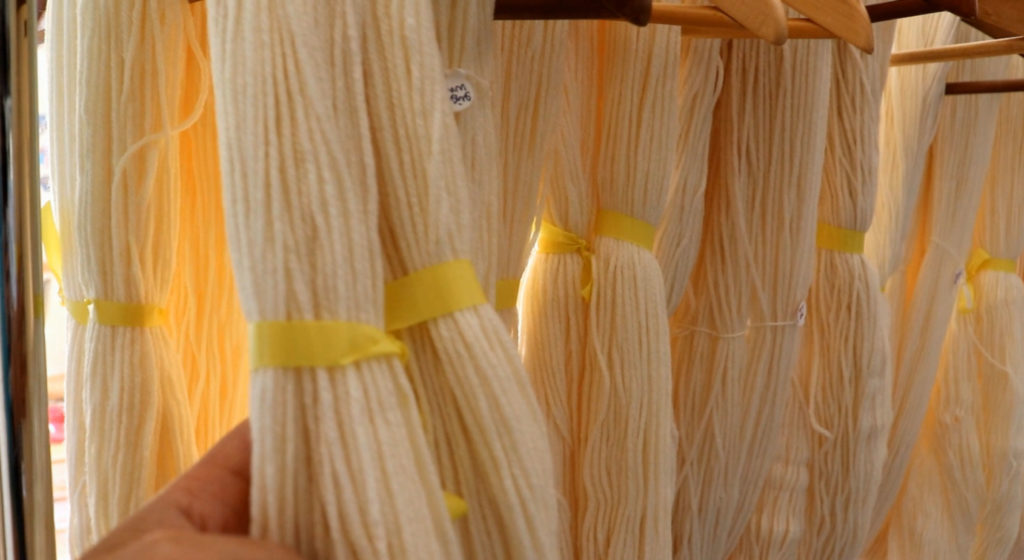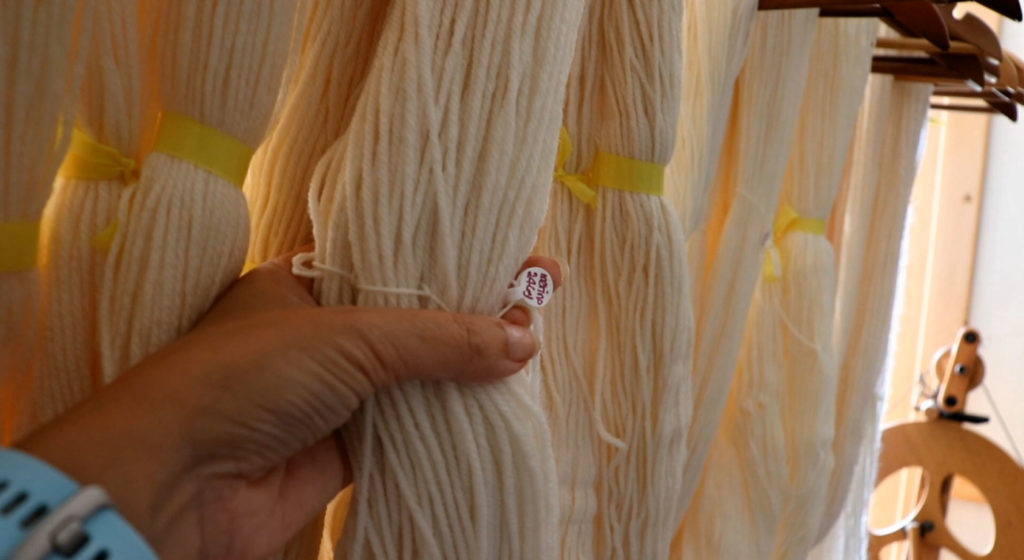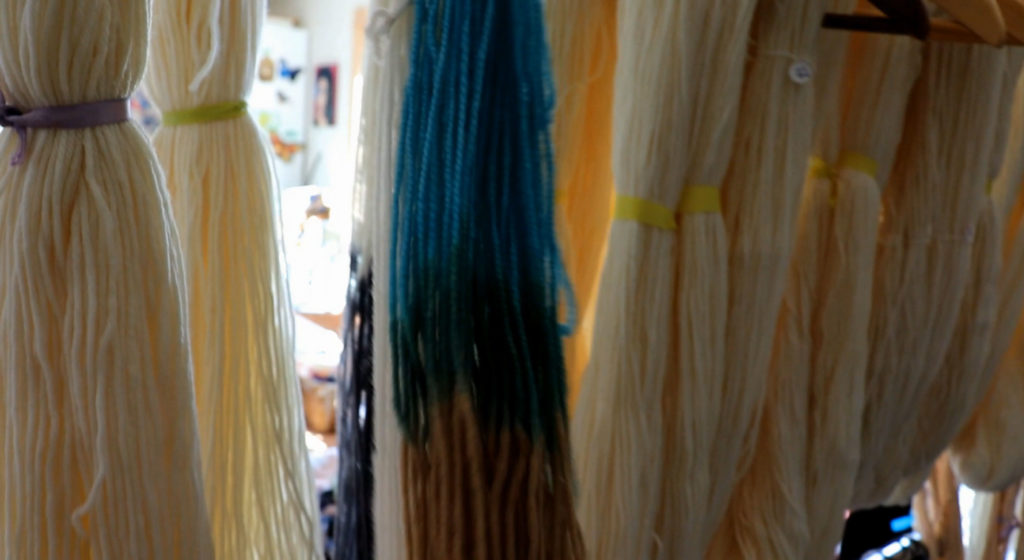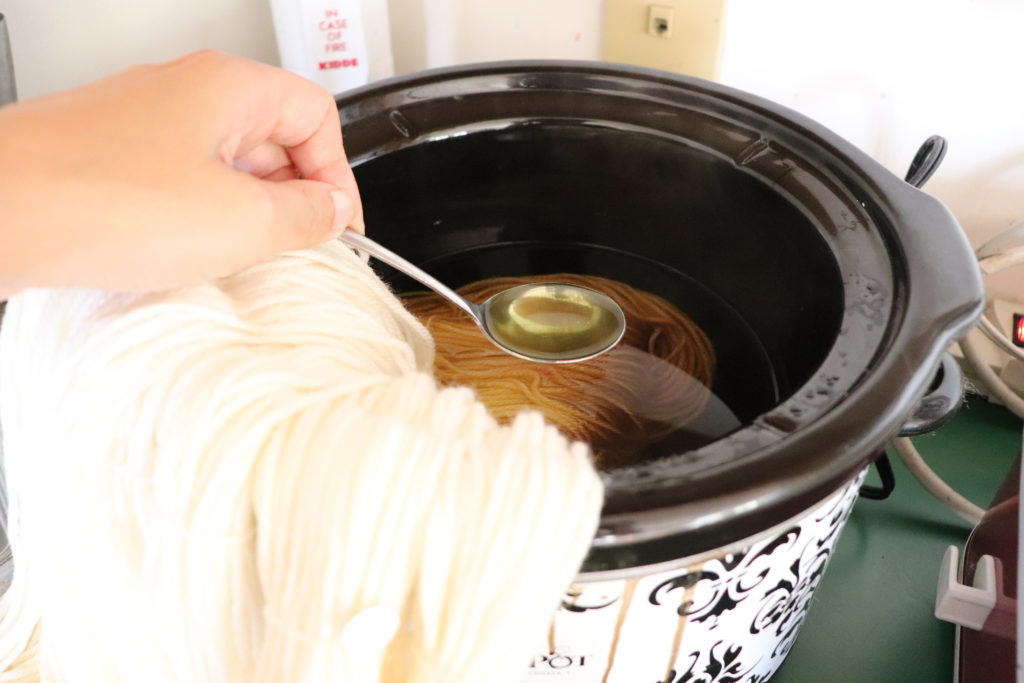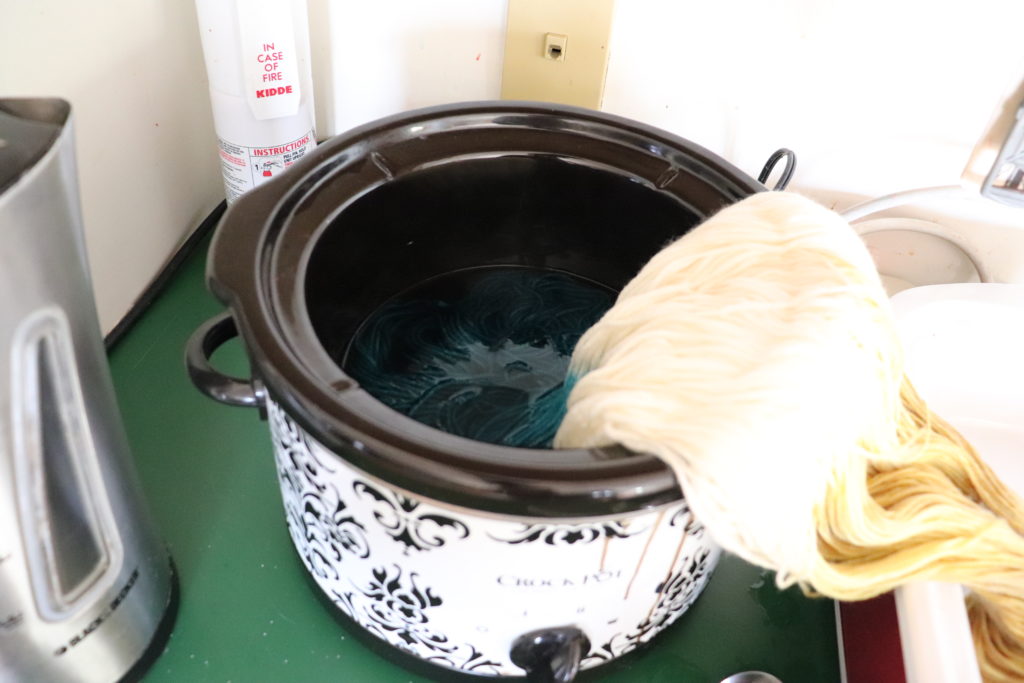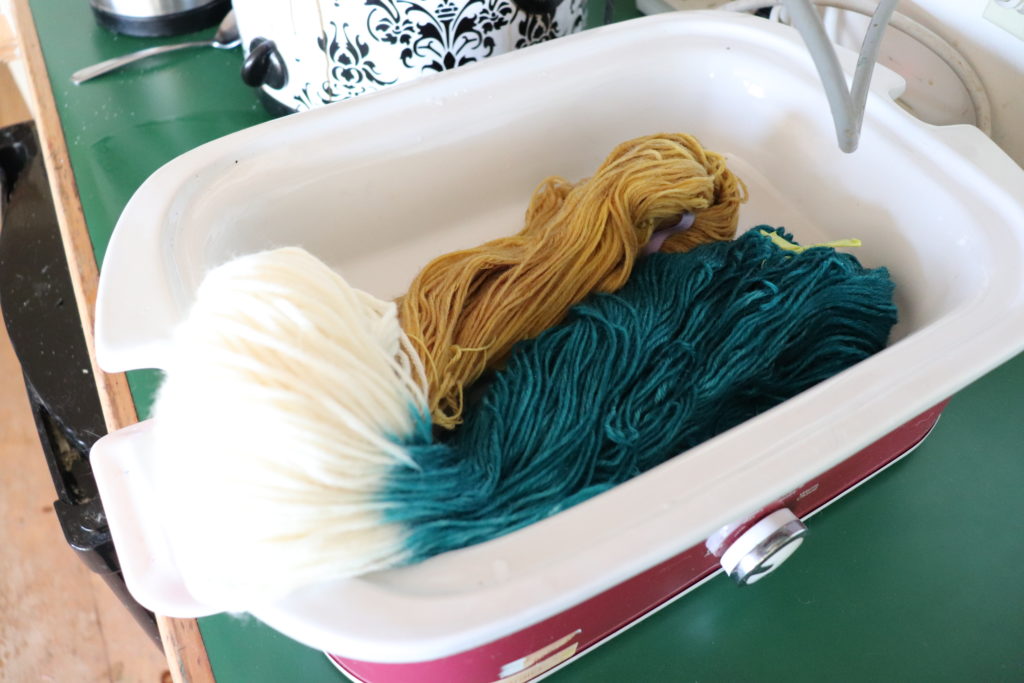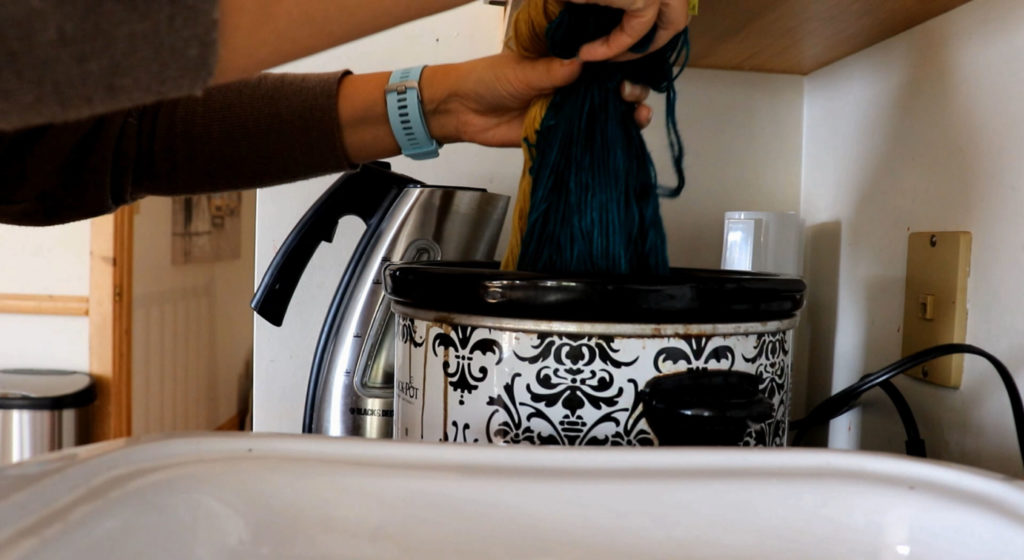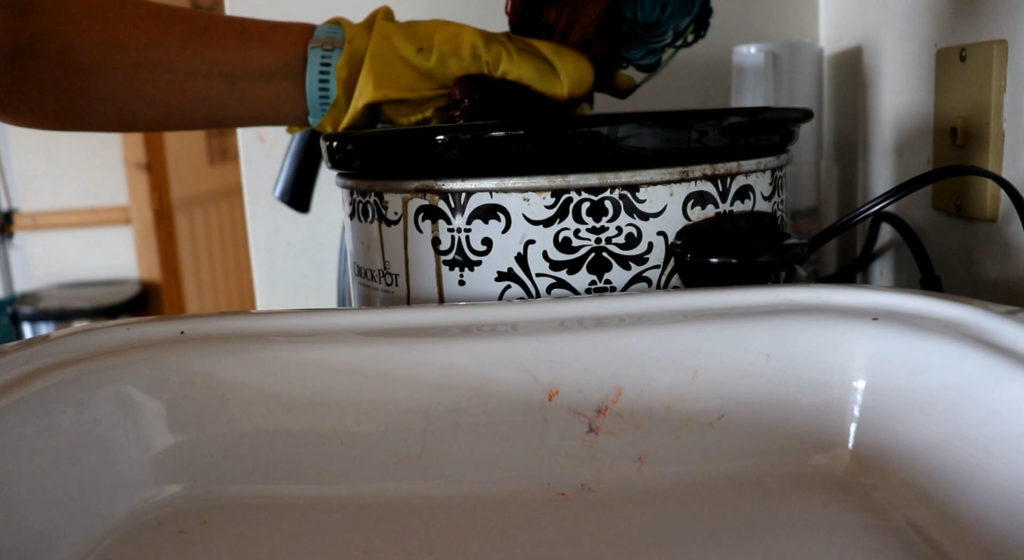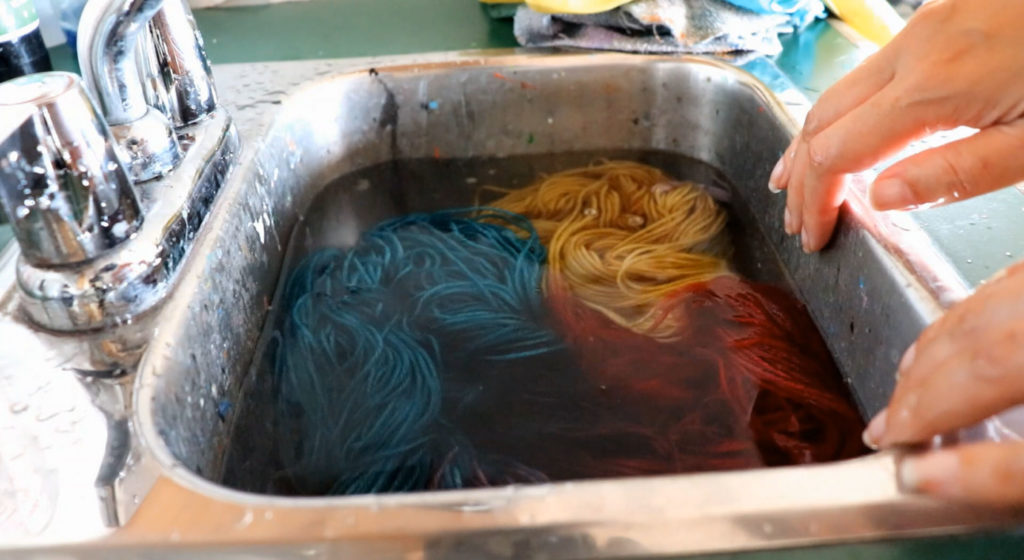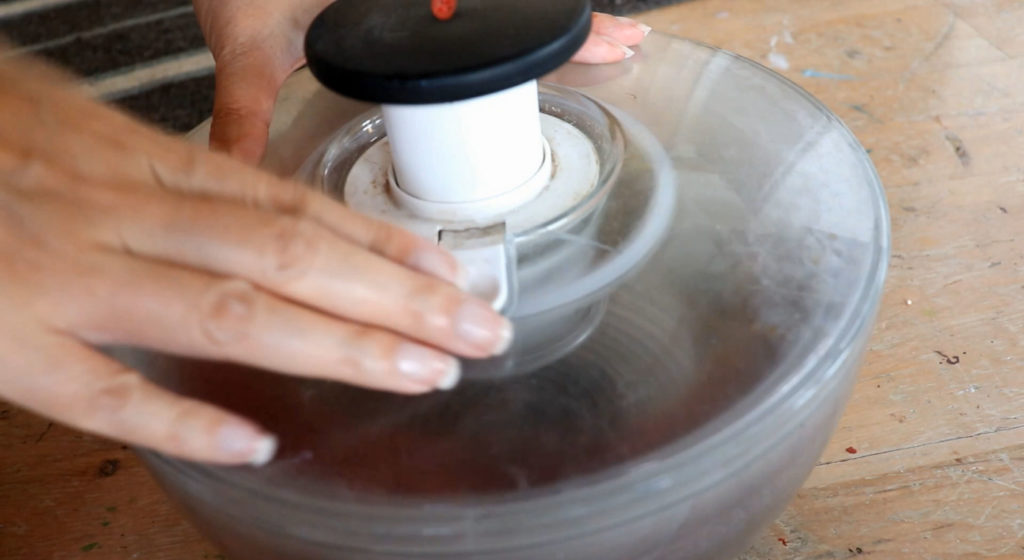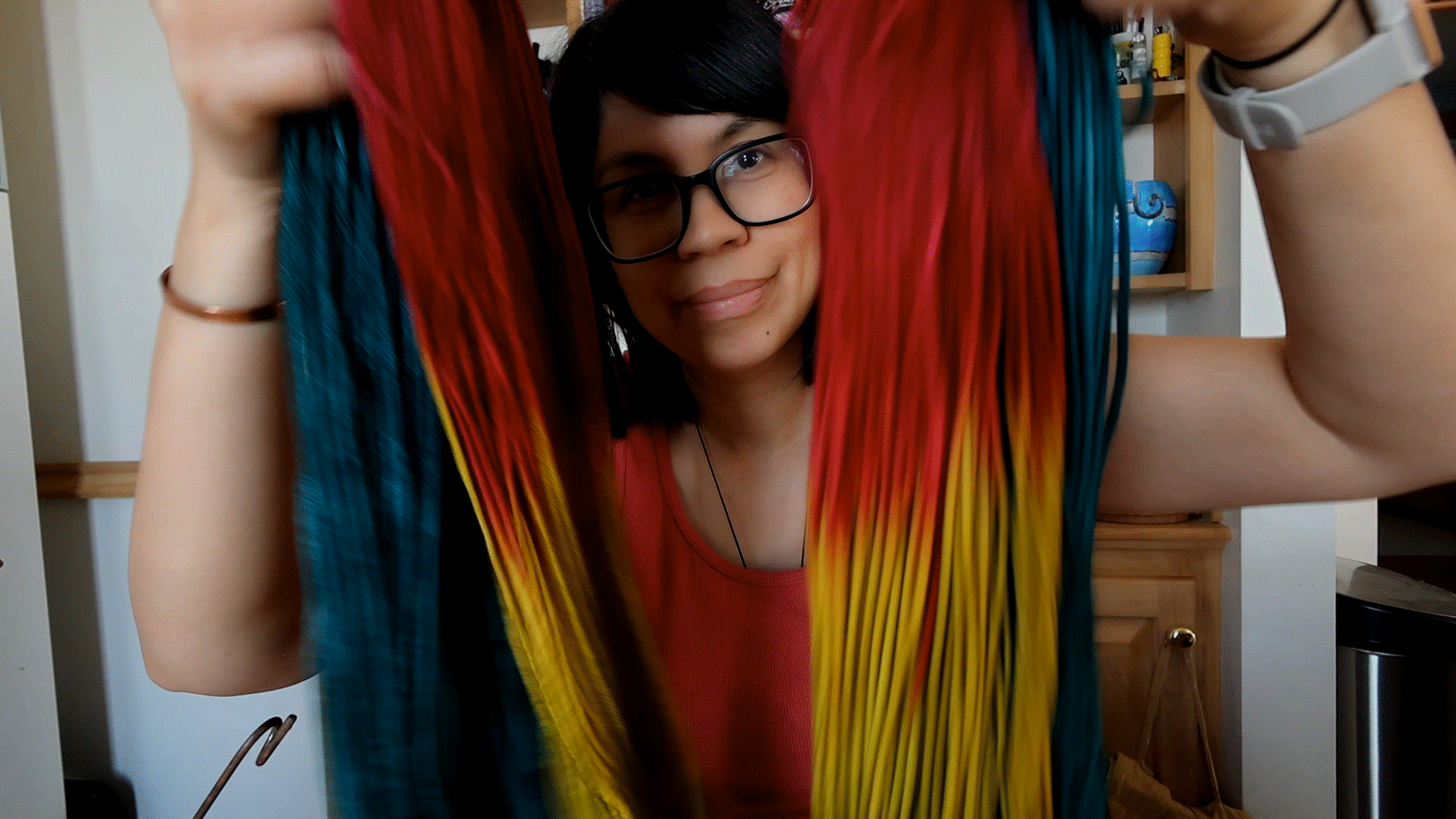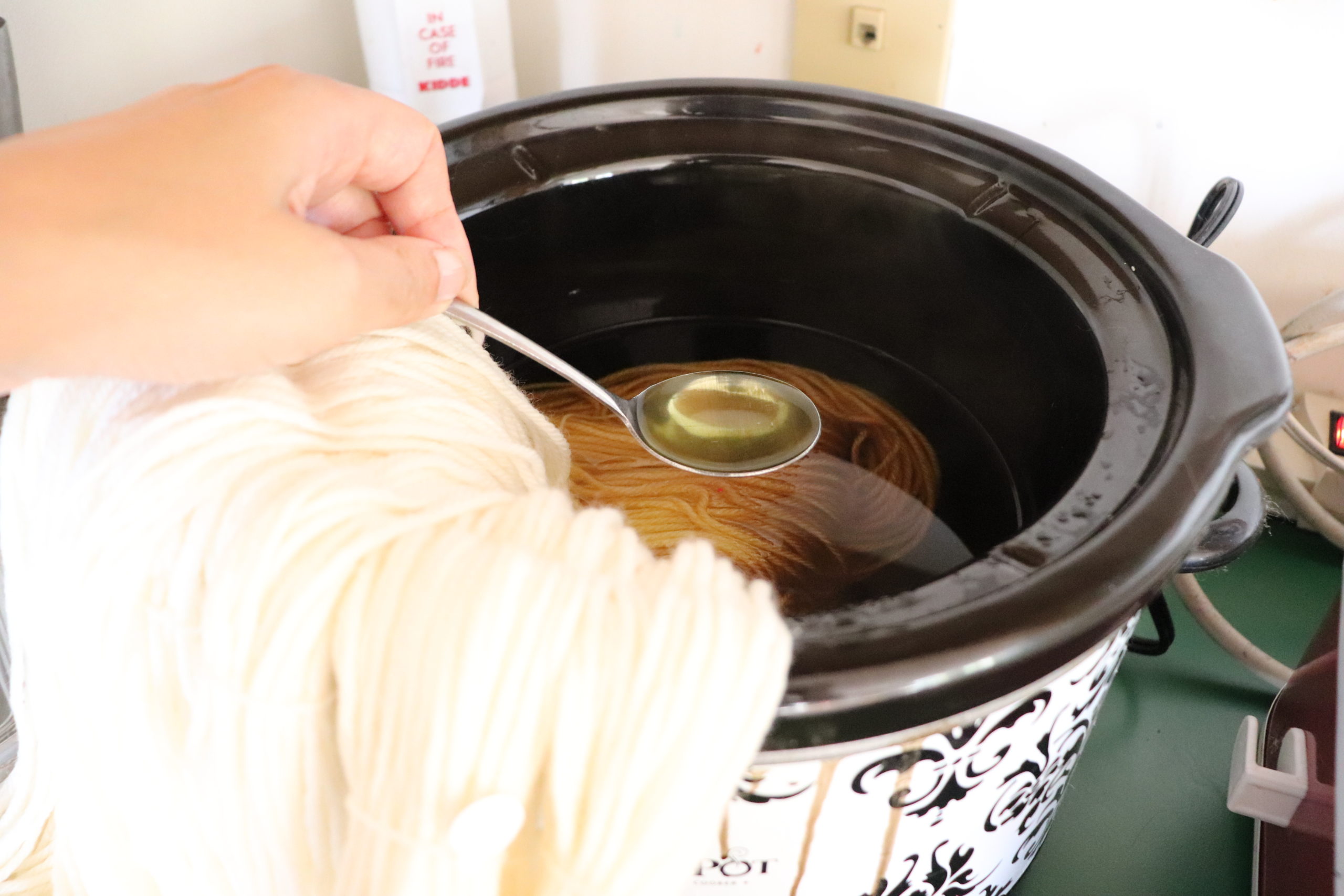
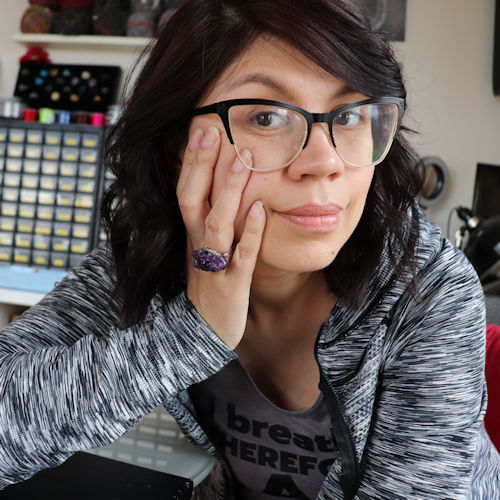
If you’re new here, let me introduce myself. Hi! I’m Leilani. I am a wife, mother, autodidact, and jewelry and fiber artist. I’ve been creating jewelry since the late 90s/early 2000s and started spinning and dyeing fiber 12+ years ago. I love to express myself through color and share my creations with others who will hopefully feel the love and attention put into every handmade item.
My learning style is to – jump in there and figure it out – most of the time with limited knowledge. I like to have some personal experience with a skill before honing it or learning to do it “the proper” way.
This post is an example of one way you can easily start dyeing yarn at home with little experience. To see a tour of the items I have in my studio for dyeing yarn and fiber (most picked up on sale or second-hand/repurposed), check out my Dye Studio Tour post/video.
Sharing My Experience
The following footage was filmed to (hopefully) inspire others to take the leap and try a skill like dyeing yarn. I wanted to show how easy it is without fuss, pre-mixing/measuring (math!), or expectations. For me, the magic happens just by trying things out for size, and I want to encourage others to do the same because the intimidation of failure often gets in the way.
Hopefully, in all its imperfection, you will get something out of it or at least know more about me as a maker. 🙂
Below is the video transcript and some extra notes in case you’d rather read than watch.
Dyeing Commercial Yarn
I dyed this superwash Merino yarn at home with a crockpot in stages over several days. It’s my easy, fuss-free method of dyeing. Here’s a quick run-through of how, step-by-step.
Pre-Dyeing Prep
First off, prep your yarn for dyeing. I usually dye two skeins at a time and loosely tie them together. Even if you are dyeing just one skein, it is recommended that you tie it off in at least two additional places to keep the yarn from tangling.
Additional notes: What I use to add ties to my skeins is a product called highway tape, or as we call it, marker tape. It’s used to mark a path through the woods or to mark trees to be removed (among other uses). I bought mine at a local farm feed store. You could also use ribbon. I advise against using pieces of scrap yarn since you’ll want something that will be easy to find and remove later and also won’t felt or tangle with your skein. Be sure to tie it loosely so that the dye can flow behind.
I also label my yarn by type, size, and length with fade-resistant jewelry repair cleaning tags. As I also make jewelry, these were a no-brainer to use.
Additional notes: these tags can be found at any jewelry supply store or online. They are made of tough material, almost like woven fabric, so they don’t disintegrate in hot water or with a cleaning solution. Therefore, they also work well in the dye pot. I use a fine-tip Sharpie marker to write the info. If you are doing one skein at a time, a notebook where you write the details of each skein would suffice. Do take notes. Don’t rely on remembering; believe me, you won’t. 😉
Another thing I have on hand is a skein of yarn ready to absorb any extra dye from the dye pot, should there be any. I don’t like to waste any product, and I’ve created new color combos this way, as the dye added is usually from more than one project.
Additional notes: I use a cheaper commercial yarn or my own 2 and 3-ply handspun yarn that I’ve spun natural color, undyed. I like to re-tie these skeins longer to get more color on each. This is also how you get a self-striping yarn pattern. You can use two chairs, spread the desired distance apart, and wrap the yarn around both. Don’t forget to re-tie it off at both ends. I rinse every section after soaking up any unexhausted dye and then hang it up to dry/continue dyeing the next project where there is too much dye in the dye pot.
Superwash Merino is a wonderful choice for yarn dyeing since it doesn’t felt. My equipment of choice for this process is a crockpot – dedicated for dyeing only, of course. I’ve already added hot water to the crockpot, and I’ll go ahead and add the dye next.
Dyeing the Yarn Section by Section: Section One
After mixing in half a tbsp of powdered dye, I dipped a section of the yarn into the crockpot. I’m using Country Classics in the color gold, which does not need the addition of citric acid or vinegar. I also didn’t pre-soak this yarn, as I will probably have to dye it in stages over the next couple of days.
Additional notes: I don’t always have the dedicated time to dye, or something will come up and interrupt my project. For that reason, I normally choose not to pre-soak the yarn so that I can simply rinse the dyed section and set it aside until the next day. There are pros and cons to not pre-soaking. The pros are obviously convenience and speed. The downside is that the color may not distribute evenly, though this is design feature that I like.
Dyeing Section Two
The gold section is done, and now I have added approx. 2 tbsp of citric acid and ¼ tsp jacquard teal to the crockpot and dipped in another section. As you can see, the water is clear, which means the dye has fully exhausted and the color has completely transferred to the yarn.
Additional notes: I add powdered citric acid and powdered dye straight to the hot water of the crockpot without pre-mixing. I stir both until dissolved, then add my yarn.
Grabbing some rubber gloves to protect my hands, I cautiously remove the yarn from the crockpot and gently squeeze out the water. Teal is one of my favorite colors. Remember, this is two skeins of yarn tied together, so I will have two practically identically dyed skeins when this is done.
Here’s a closer look at the two sections dyed:
Dyeing the final Section
Alright, let’s do this final section of color. I’ve already added approximately 2 tbsp citric acid and ¼ tsp of G&S dye in the color burgundy to a bit of warm water in the crockpot while the bulk of the water boils. After adding the boiled water to the crockpot, I stir the mixture to dissolve the powdered dye and citric acid. I make sure to be careful not to splash hot dye water on me and not breathe in the powdered dye while stirring. Protecting your skin and clothes with gloves, goggles, a mask, and an apron whenever possible is always a good idea. I make sure to be really careful if I am not donning the full protective gear.
Now to dip the final section of bare yarn into the crockpot, and we’ll let it soak for a few minutes. I hang the two other sections already dyed to the side of the crockpot and move my rectangular crockpot closer to catch any drips.
After a few minutes, I check on how the color is developing. Using a spoon, I’ll gently press the yarn into the dye and shift it around in the pot to distribute the color more evenly.
Additional notes: I don’t keep track of the amount of time each section is in the crockpot. Usually, I do other tasks and check on it when it is convenient for me to do so. If I’m impatient, I check it every 10-15 minutes. But in reality, a good 30 to 40 minutes is usually needed for the color to develop, if not longer. Some colors, such as black, need hours in the crockpot to properly exhaust. This is an easy method, not a fast one. But it suits me because I can finish other tasks while waiting. Note that every crockpot (slow cooker) is different. Therefore, times will vary.
Shortcuts in Dyeing
You’ve probably heard that you need to pre-mix your dye into a liquid concentrate and pre-soak your yarn in a soap like synthrapol to open up the fibers and get it prepped for dyeing. Although this is advisable, I prefer to take a LOT of shortcuts when dyeing yarn. It’s partially due to saving time but mostly because it’s part of my creative process to let things roll and see what happens. I take detailed notes as I go, just in case I want to replicate the outcome.
Also, I find that once the dyed yarn is dry, if I don’t like the color then there is an opportunity to over dye to intensify the color or change the hue. You can come up with some unique colors this way. But more about that later.
I mainly dye fibers for spinning, but once in a while, I like to dye commercial yarn. Although I knit, crochet, and do some simple weaving, I prefer dyeing or spinning. When I get on a dyeing or spinning tangent, I end up with a backlog of yarn. So, I list those for sale on my website.
Final removal from Crockpot and Rinsing
Let’s remove this section now and see how it looks. Once again, I gently squeeze out the water with my rubber gloves. You don’t have to remove all the hot water, just enough that it doesn’t drip and scald you while getting it over to the sink for the final rinse.
Time to fill the sink to rinse our newly dyed yarn. This small bar sink came equipped in this space that I now call my studio. It’s a working sink that has seen a lot of art over the years – hence all the splattered paint. Don’t worry; it won’t come off on the yarn.
I’ll let this sit for a few minutes, then come back and check if any dye has been released from the fiber. I’ll add Synthrapol in a second rinse if the water is not clear after this soak. Synthrapol is a type of soap used for prepping fibers for dyeing or removing dye particles afterward. If you don’t have Synthrapol, you can use Blue Dawn dish soap.
The water appears to remain clear, so I think it’s safe to get this drained and hung outside to dry. Freshly dyed yarn will be the most vibrant, and the color will mute once dry. This color looks great and the dye has exhausted fully, but I can’t be so sure I’ll be happy with the results until I see the skeins completely dry.
After draining the water, I give it a gentle squeeze, careful not to over-agitate. Superwash yarns do not felt. But I still like to be careful so they don’t get tangled. I have managed to tangle yarn, even when tied off carefully.
Further Drying: Going for a Spin
Now for the spin cycle. A salad spinner has been an incredibly useful tool in the studio; who knew? Think of it as a mini-washing machine, spinning out the excess water. I tend to pump my yarn and fiber through the salad spinner 3 times. By the third time there is significantly less water and it then can be hung up to dry. I bought this spinner 40% off after Christmas online several years ago. You can see the huge crack in it from being pumped one too many times.
The Final Product
So I have a secret: these are not the original colors! Once dry I found the color to be a bit too dull for my liking, so I over-dyed each area. Unfortunately, I didn’t capture the process on camera, but the original gold section got over-dyed with 1 tbsp of grasshopper, the teal section with ¼ tsp more teal, and the burgundy overdyed with 1 tsp. magenta. Now, this yarn is vibrant and saturated with color, and most importantly, I’m happy with it.
Additional notes: It’s worsted weight, so this set has many knitting and crochet possibilities. I decided to list these on the website if you are interested in giving them a new home. I don’t seem to have enough time to keep up with all the yarn I make/dye. 🙂
Here I am with the finished product:
You may notice, especially in the teal section, that the color is of an uneven saturation.
I intentionally dye my yarn this way because I like how it knits up with darker and lighter variations within the same color. I think it looks more interesting than the usual even saturation you see with commercial yarn.
If you wanted a more solid color, you would need to soak your yarn beforehand, preferably with a product like Synthropol to open up the fibers, and then add salt to the dye bath. This will even out the distribution of the color to your yarn and not give so much of a mottled, uneven effect. You may also have to use more dye.
Your Turn to Play
I hope this inspires you to experiment with dyeing wool yarn with a crockpot. Remember, you don’t have to get it right the first time; tweaks can always be made.
I’d love to hear from you if you have any questions or suggestions for future videos.
More info about me, my creative process, and the products I have for sale can be found at leilanihandmade.com.
Thanks for watching! Until next time…

